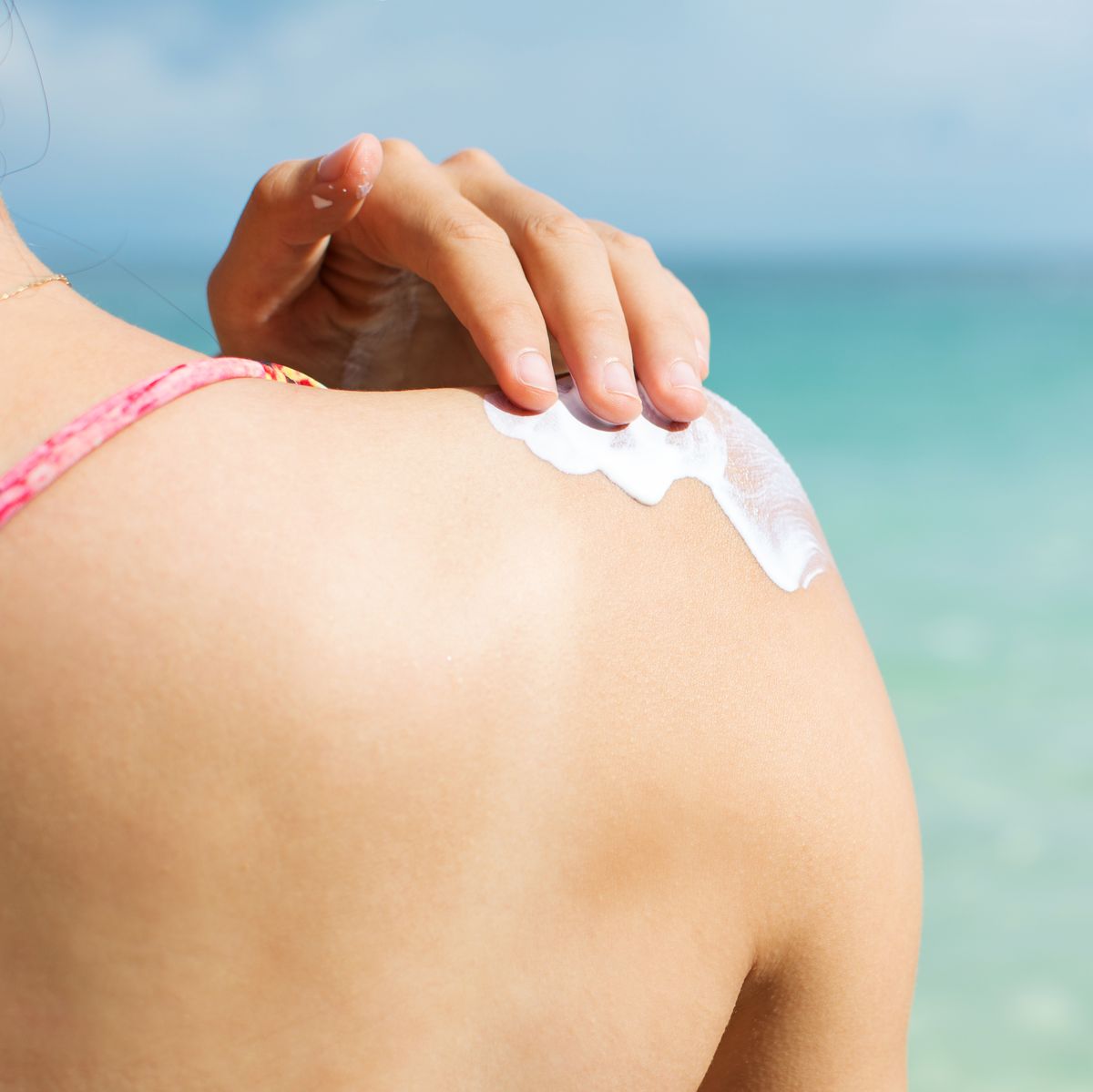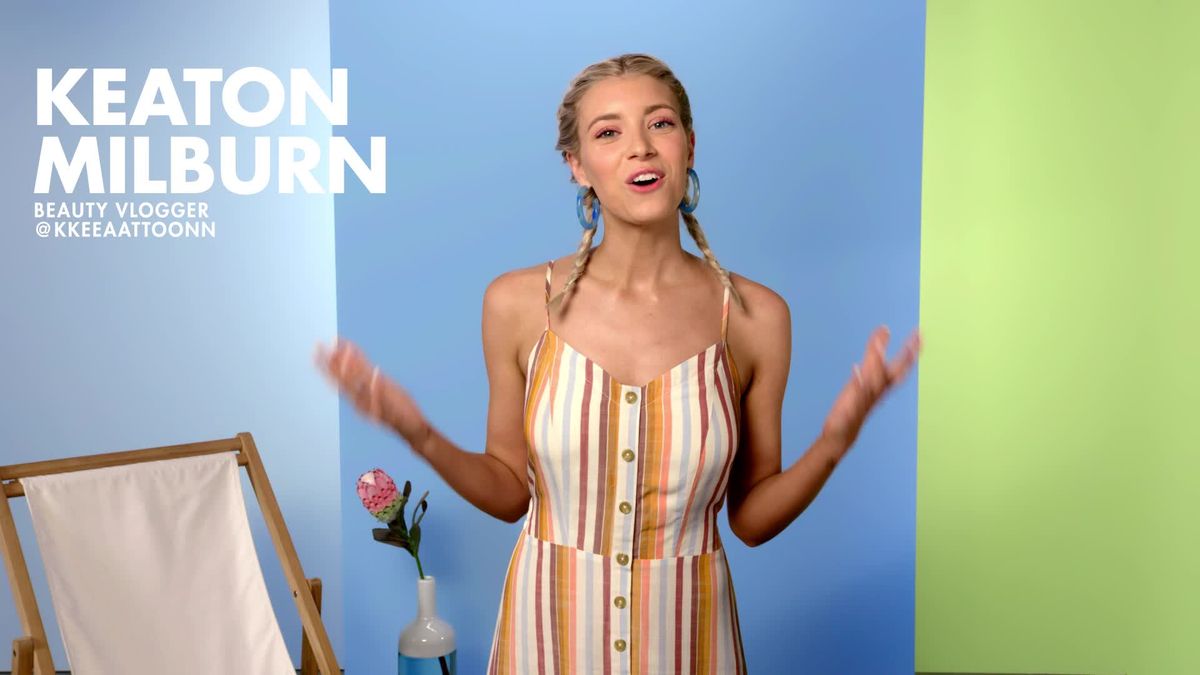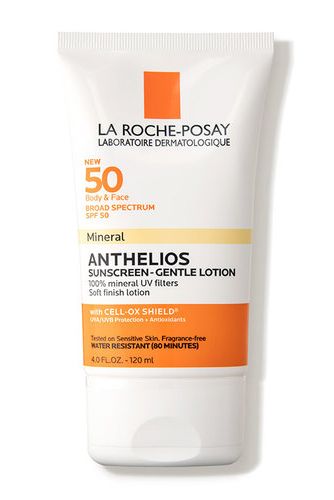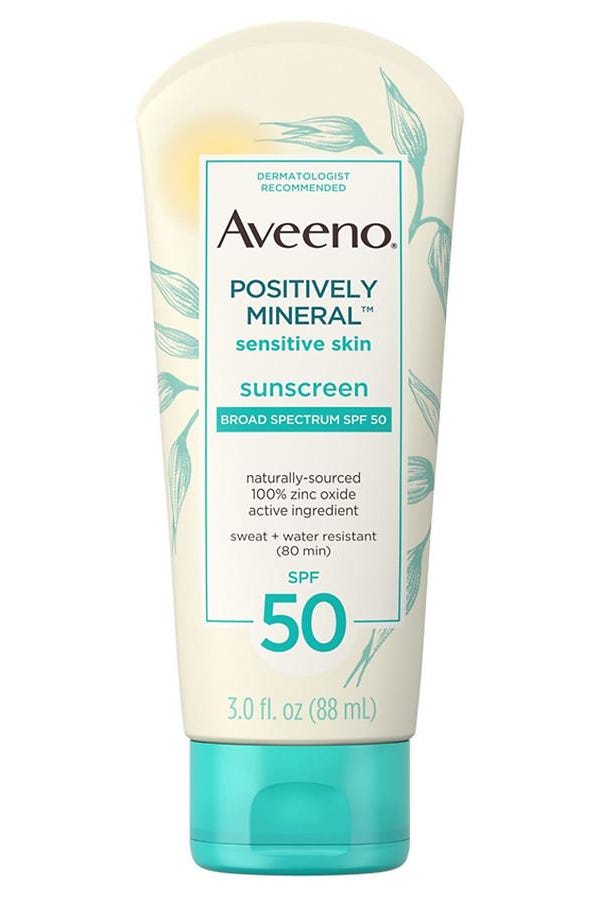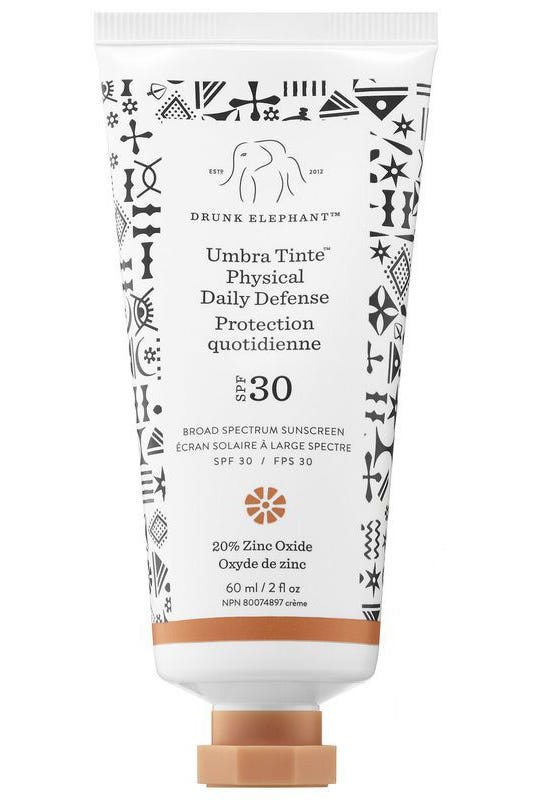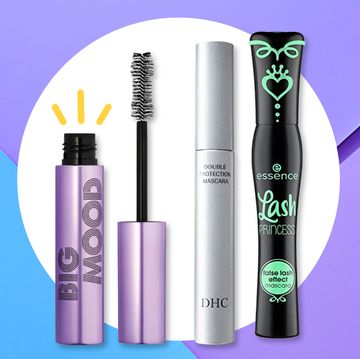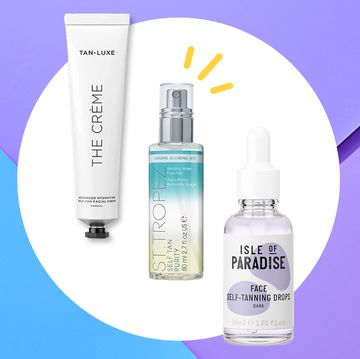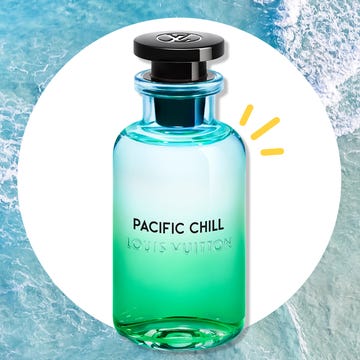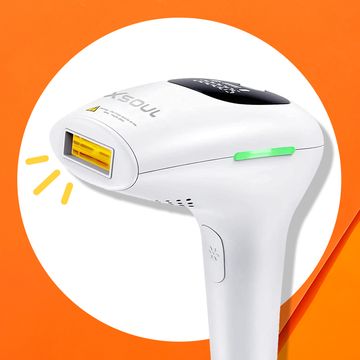Ever looked at the ingredients list of your go-to sunscreen bottle? There's a lot of complicated looking ingredients on there (try saying "oxybenzone" three times fast!).
Two popular sunscreen ingredients in particular seem like they're better suited for an AP chem class than for sun protection: titanium dioxide and zinc oxide. Besides their complex sounding names, the way they protect your skin from UV light is actually pretty simple. Here's what you need to know about titanium dioxide and zinc oxide, aka mineral sunscreen:
What are titanium dioxide and zinc oxide?
Titanium dioxide and zinc oxide are two naturally occurring minerals. When applied topically, they have the ability to block the sun's UVA and UVB radiation from being absorbed into your skin, meaning they are considered broad-spectrum. They're used in physical (aka mineral) sunscreens, says Deanne Mraz Robinson, MD, a dermatologist in Westport, Connecticut.
Wait...so what's a "physical" sunscreen?
There are actually two different kinds of sunscreen: chemical and physical sunscreens.
The first type of sunscreen is chemical. These are made of synthetic ingredients like oxybenzone and octinoxate (you'll see these listed in the "active ingredients" section at the top of the label). They work by sinking into the skin, absorbing harmful UVA and UVB rays, and converting them into heat.
Meanwhile, a physical sunscreen (also referred to as mineral sunscreen), uses either titanium dioxide, zinc oxide, or a combo of both to physically block the sun's radiation by forming a barrier that sits on top of your skin, says Dr. Mraz Robinson. The UV rays literally bounce off of this barrier, so they can't penetrate the skin and cause damage and skin cancer.
Unlike chemical sunscreens, which have ingredients that can cause irritation and even allergic reactions, physical sunscreens are pretty gentle on the skin. In fact, the National Eczema Association recommends mineral sunscreens for people with eczema.
How do you use titanium dioxide and zinc oxide sunscreen?
Any sunscreen (including physical ones) should be applied 15 to 20 minutes before heading outside. It takes time for the ingredients to be absorbed, so until then, your skin is essentially unprotected, says Dr. Mraz Robinson.
You should also re-apply every two hours or sooner if you've been excessively sweating or in the water. “If you’re sweating, you lose a lot of the protection factor as the lotion drips away,”says Whitney Bowe, MD,a dermatologist in New York City.
The more sunscreen you use, the merrier. Derms agree that you need be using a shot glass-sized amount of sunscreen to cover all the exposed parts of your body and a nickel-sized blob for your face. If you skimp (or forget to reapply), you're not getting the full protection number listed on the bottle. “Studies show that if you apply SPF 30 the way most people put on sunscreen, you’re getting closer to an SPF 10,” warns Dr. Bowe.
Who is mineral sunscreen best for?
Both forms of sunscreen are considered safe, and dermatologists always say the best sunscreen is the one you'll actually wear. But since UV rays are deflected off of skin with the mineral version, these types of sunscreens are best for people with heat-activated issues, like melasma or rosacea, says Renée Rouleau, celebrity aesthetician. They are even proven to prevent melasma relapses.
Check this out for more ways to get summer ready:
What's the deal with physical sunscreen and the ocean?
You've probably heard a lot about chemical sunscreen ingredients and their effect on the ocean's ecosystem. Not to make matters more complicated, but not all mineral sunscreens are reef-safe either.
"The reason why a lot of mineral sunscreens use nano-sized minerals is because the particles are so small that they don’t make you look like a ghost [more on that later]," says Dr. Bowe. Problem is, those tiny minerals can easily be absorbed by—and harm—marine life.
"So if you’re looking to be environmentally conscious when you’re swimming in the ocean, you want to be using non-nano mineral sunscreens," says Dr. Bowe. For a particle to be considered non-nano, it needs to be larger than 100 nanometers (or 100 billionth of a meter). There is currently no regulation on nano or non-nano sunscreens in the US, but looking for mineral sunscreens labeled with non-nano or reef-safe is a good start.
Is there anything I should look out for?
If you're using one of those convenient spray sunscreens, try holding your breath or breathe out when applying. Inhaling the nanoparticles of zinc or titanium in the spray can be harmful to lungs, says the Environmental Working Group. Also, don't forget to rub in the spray to ensure full coverage.
Another FYI, because physical sunscreens use zinc oxide and titanium dioxide, two white minerals, they can sometimes leave behind a chalky white finish on the skin (think of the white on surfers' noses). If you have a fair to medium skin tone, this might not be a problem once you work the sunscreen in. But for those with dark skin tones, it might be an issue. Look for lotions that say "clear" or "tinted" on the label.
Here are some mineral sunscreens to check out.

Maddie Aberman is the beauty editor at Women's Health and has been covering skincare, makeup, hair, and wellness for more than five years. When she's not thinking about beauty, she's dreaming of getting a puppy (all dog mom advice is welcome).
